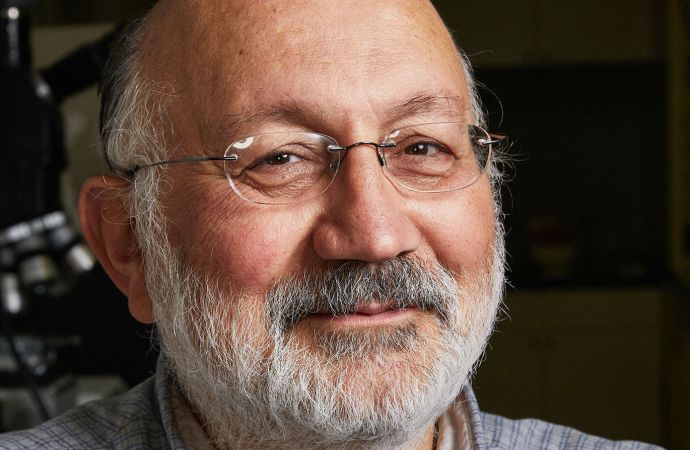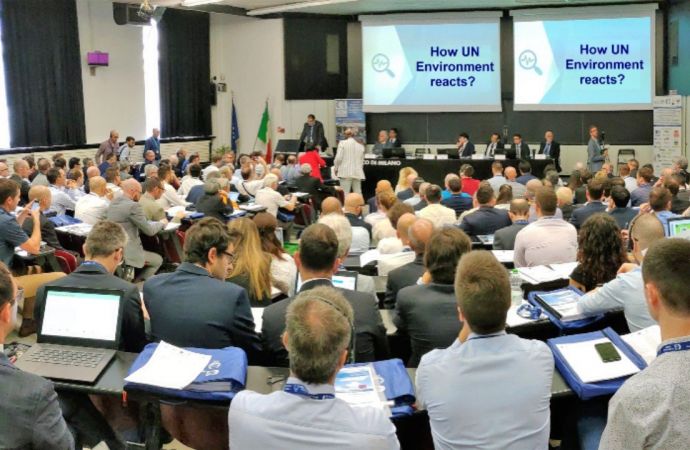Refrigeration legend Pega Hrnjak of the University of Illinois at Urbana-Champaign talks about the state of the natural refrigerants industry and some of his latest projects.

Pega Hrnjak
One of the foremost refrigeration research professors in the world has been gracing the halls of the University of Illinois at Urbana-Champaign since 1993.
That’s Predrag (Pega) Hrnjak, a native of Belgrade, Yugoslavia (now Serbia), who is also director of the university’s Air Conditioning and Refrigeration Center. And on top of that, he runs his own research and consulting business, Creative Thermal Solutions (CTS), which he founded in 2003.
At CTS and the university, Hrnjak has been engaged in seminal research on a wide range of natural refrigerant projects, from low-charge ammonia to ejectors for transcritical CO2 to some of the early CO2 mobile air conditioning systems.
shecco was lucky enough to find time in Pega’s busy schedule to query him about his recent work and the state of natural refrigerants.
shecco: As you look at the North American and global marketplaces, how would you size up the status and potential of natural refrigerant solutions for HVAC&R?
Pega Hrnjak: I would say that the status and potential of natural refrigerant solutions for HVAC&R are stronger than ever. Generally, the F-Gas Regulation in Europe is well established, the effect of legislation in California is more prominent while changes in China are more than obvious.
Probably the greatest impact at the moment comes from the IEC’s increase of allowed charge for hydrocarbon systems to 500 g. (See page 24.) I believe that change will affect primarily small self-contained products for commercial refrigeration (bottle coolers and various display cases) and distributed secondary loop systems. The next in the line for hydrocarbons will be small unitary air-conditioning systems.
CO2 heat pump systems are considered strongly for automotive reversible systems (thermal management), primarily for electric cars. We are witnessing very important inroads of new CO2 air-conditioning systems for trains and similar autonomous vehicles like buses. CO2 supermarket refrigeration – and to some degree industrial as well – are getting even stronger.
Ammonia is just as resilient thanks to the industry-inspired and promoted reduction in charge, especially unitary systems with charges around 50 – 100 kg (110-220 lbs).
shecco: What is your most interesting current research project involving natural refrigerants?
Pega Hrnjak: At CTS we are very intensely working on various projects in almost all of the areas described above.
shecco: Can you update us on the status of the low-charge ammonia tests you started last year?
Pega Hrnjak: CTS has perfected new facilities for the evaluation of ammonia low-charge unitary systems in terms of air and refrigerant mass-flow rates, capacity, and efficiency (COP). That’s thanks to essential support from Southern California Edison (Senior Engineer Paul Delaney, in particular), and strengthened recently by Lineage Logistics’ involvement.
These measurements are difficult primarily because of the sizes, capacities and complexities. But CTS provides much more than just a rating. Once a unit is put into the evaluation program, it is much easier as well as essential to explore ways to improve performance, and we do that on almost a regular basis and with great success. The program is completed for several units, and several more are in line.
shecco: Are you still pursuing commercial opportunities for the super-low-charge air-cooled ammonia chiller?
Pega Hrnjak: Yes. That is one of my dreams; it’s the same as low and ultra-low charge systems used to be 20 years ago. Today everyone realizes the value of charge reduction in ammonia systems and I am sure we will see the same development in super-low-charge air-cooled ammonia chillers. Our system is very efficient, ultra-low charge (1 pound per 10 TR) and with very-low-cost components. We are still looking for an appropriate partner for realization, but we are continuing to develop this system on our own.
shecco: We have an article about Chinese Railway companies planning to use a CO2-based AC system, including CRRC Changchun Railway Vehicles Co./CRRC Dalian Institute, and Guangzhou Dinghan Railway Transportation Equipment Co. (See page 80.) Can you explain your contribution to that?
Pega Hrnjak: Yes, CTS was engaged with both but at different levels. We have done a complete project for CRRC Dalian Institute, with CRRC Changchun Railway Vehicles Co. as a customer.
CTS started from a baseline R407C system, measured its performance, redesigned the components and the system for CO2, built or ordered all components, and built the fully functional prototype that fitted into a 10% smaller frame. The measured efficiency was significantly above the COP of the baseline at the same capacity and identical conditions. We are helping the technology transfer to the customer who delivered the units to CRRC Changchun Railway Vehicles Co.
We have been invited by Guangzhou Dinghan Railway Transportation Equipment Co., but had to decline because of our contractual obligations at that time. CTS continues to cooperate with CRRC on further developments.
shecco: What is the status of CO2 heat pump development for electric vehicles?
Pega Hrnjak: The push from automotive companies is very strong but their reversible systems for electric vehicles are much more complex than for railway systems, for example. That is the reason why we see so many different architectures or approaches for thermal management in new cars, whether for CO2 or synthetic refrigerants. I would characterize the status as under strong development in the final phases, and really attractive solutions will be presented soon.
shecco: Do you see CO2 condensing units for small retail stores coming to the North America market in the wake of the Epta-Kysor Warren merger?
Pega Hrnjak: It is difficult to predict exactly what, or even more importantly when, that merger will really bring in CO2 condensing units for small retail stores. I believe it will, but to be honest I anticipated the same after the Panasonic and Hussmann merger but it is going slower than I expected.
Related stories



